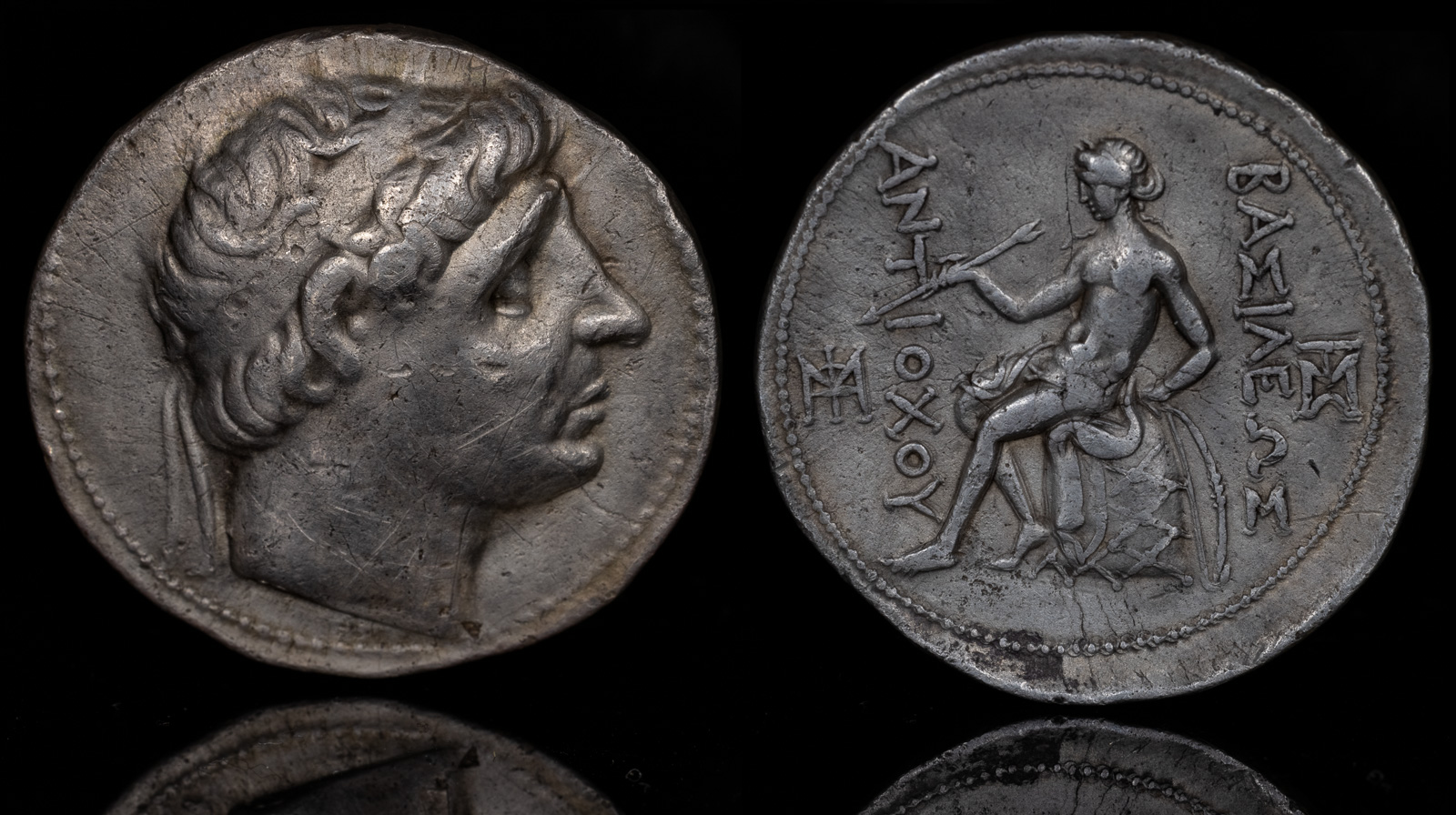
Seleukid Empire, Antiochos I Soter AR Tetradrachm
Seleukeia on the Tigris, 281-261 BC
Diademed head to right / Apollo Delphios seated to left on omphalos, testing arrow and resting left hand on grounded bow; ΒΑΣΙΛΕΩΣ to right, ΑΝΤΙΟΧΟΥ to left, monogram to outer left and right.
SC 379.5a; HGC 9, 128g. 16.80g, 29mm, 3h.
Seleukeia on the Tigris was perhaps the most famous of the Seleukeia cities and was founded in 305 BCE by Seleukos I Nikator. Its location was roughly at modern day Baghdad. It initially served as the capital of the Seleukid Empire before it was moved to Antioch a short time after 300 BCE.
Despite the move, Seleukeia remained a vitally important trade hub and its population received an influx when the inhabitants of Babylon were forced to move there. At its height in the 3rd and 2nd centuries BCE, it is believed to had harbored 100,000 people in the city itself, and a half million in the region. This placed it among the greatest cities of the day.
Later on, it was captured by the Parthians and made their capital. Its fame and power diminished sharply after its destruction by Trajan and then Hadrian.
Seleukos I Nikator gains control of Babylon, founding the Seleukid Empire and beginning Babylon’s decline as a center of power as Seleukos establishes Seleukeia on the Tigris.
Seleukos I Nikator constructs Seleukeia on the Tigris.
The inhabitants of Babylon are moved to Seleukeia on the Tigris.
Seleukeia on the Tigris comes under Parthian rule.
Mithridates III, the reigning monarch of the Parthians, is defeated by Orodes II at Seleukeia on the Tigris.
Seleukeia on the Tigris is destroyed by Romans.
April
Carus achieves victories over the Qadi and Sarmatians. He takes Seleukeia and the Sassanian capital Ktesiphon.